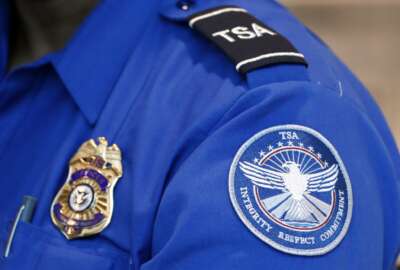Two feds who bring real passion to their jobs
Two federal executives exemplify the power of passion in how they approach their jobs.
“What do you do?” That’s the most common question newly introduced people ask one another in social situations. I’ve heard it said this is an American phenomenon, being defined by what one does.
People who are committed to what they do, who are enthusiastic about it and who like it, they’re never boring. Having interviewed literally thousands of federal employees in a vast array of functions, I can tell you it never gets dull. This column is about a couple of people whose enthusiasm inspires.
Sometimes people surprise you. A case in point is Simon Liu, recently appointed director of the Agricultural Research Service, one of the largest components of the Agriculture Department. Born in Taiwan, he obtained multiple post-graduate degrees here in the U.S. Liu’s current directorship caps a long federal career. He’s worked at the Justice and Treasury Departments, and at the National Library of Medicine.
His deep enthusiasm for the mission of ARS, though, came from his answer to what I thought would be a throw-away question. Liu has degrees in government, computer science and business administration, and even in higher education administration. I asked him, as head of the sprawling ARS, if he had any particular interest in farming itself. I asked, “Do you at least plant a few tomatoes in the backyard to get a feel for what the soil is all about?”
Without hesitation, Liu answered: “I was a farm boy. My parents … my brother, they are farmers. So as a farm boy, my passion is to get to give back to the agriculture industry, and provide help assistance to farmers and ranchers that include my brother.”
Liu added, “So at this point of my career, I need to answer the call on my soul, and come home to help the ag industry. That’s why I’ve come to ARS. ARS and USDA is really my home.”
Almost nothing a guest says leaves me speechless, but that came close! I say, Dr. Liu, welcome home.
Leigh Ann Searight is not a burglar. But she showed a lot of enthusiasm for sneaking into unlocked back doors at dozens of Veterans Affairs Department medical centers. Why? To wake up the centers’ administrators to pay more attention to physical security, like making sure visitors can only come in through the doors they’re supposed to.
No thief, Searight is a deputy assistant inspector general at VA. She coordinated three dozen teams of three or four people to visit some 70 VA facilities to try the doors. The IG was trying to assess the hospitals’ physical security, now that VA has implemented an incident reporting system.
Searight and her team decided to have a little fun, with full seriousness of intent.
Normally, the IG office alerts an agency about what it’s about to investigate or audit.
“This was a very nontraditional effort for my teams,” Searight told me. “We actually spend a few months preparing and planning for audits. When we normally do them, we give VA notification. We have multiple meetings so that they know it’s coming.”
She added, “But in this case, we didn’t do any of that.”
Her teams needed the element of surprise. Facility leadership wasn’t to know of the perimeter audits until the teams showed up. Teams, which included criminal investigators, walked around the large buildings, trying doors that should have been locked. I guesstimated an average VA medical center has 30 doors. Searight said that some of them have more than 100 doors on the ground level. In all, the teams tried 3,000 doors and found 17% of them unlocked. They also found public entrance doors lacking video surveillance, and broken or missing cameras all over the place.
“We literally walked the entire facility and opened every door that we could. Whether it said it was a public access or nonpublic access, we tried to open them,” Searight said. Some teams told her they’d ended up walking miles, sweating. Often, they found propped-open doors, as if someone slipped out for a smoke and wanted to save time getting back in. In one case, a team entered an obscure back door and made their way right into an intensive care unit!
I asked Searight if the word started getting out, so medical center directors could warn their counterparts to expect the IG snoops. Searight said that in fact by the third day of trying doors, results improved.
“We saw the transfer of that information going across the facilities and giving them a little bit of a heads up to prepare,” she said. But in reality, this look-see caught VA facility directors with their proverbial trousers down.
Copyright © 2024 Federal News Network. All rights reserved. This website is not intended for users located within the European Economic Area.
Tom Temin is host of the Federal Drive and has been providing insight on federal technology and management issues for more than 30 years.
Follow @tteminWFED







